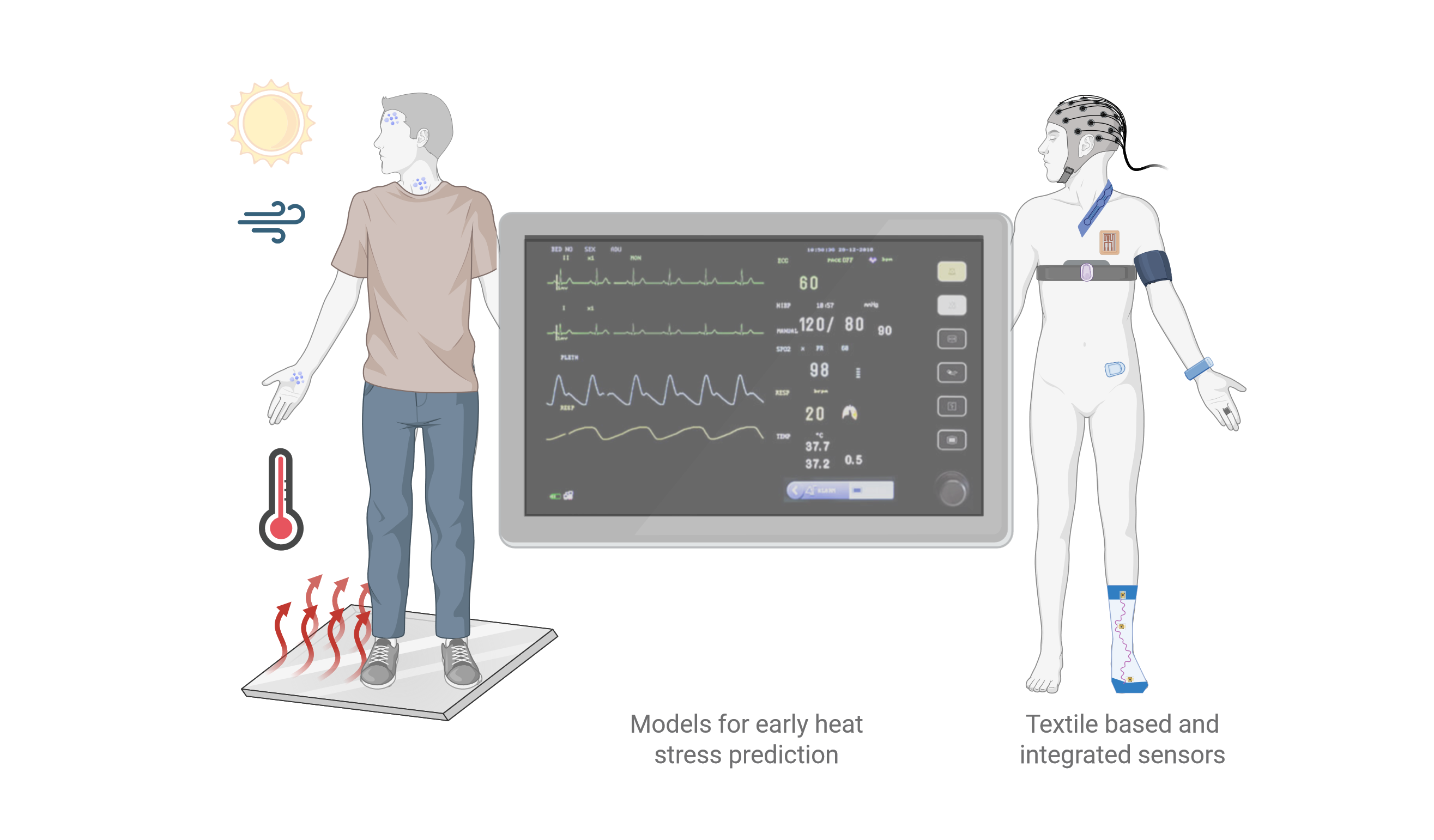Heat strain monitoring and early detection of heat stress
Development of unobtrusive and continuous monitoring approaches for assessing the heat stress of people exposed to hazardous conditions or populations highly susceptible to heat stress.

The human body maintains a core temperature of approximately 37°C, regulating it within a narrow range of ±0.5°C. This thermoregulation is achieved through physiological responses such as cardiovascular adjustments (e.g., skin perfusion) and sudomotor activity (e.g., sweating). Hot conditions and/or high physical activity might result in uncompensable heat accumulation (core body temperature rising beyond 37.5°C) finally leading to heat stress.
In Diagnosis, we focus on identifying the most effective and accurate methods for unobtrusive and continuous heat stress monitoring. To achieve this, sensors positioned close to the body will be seamlessly integrated into textiles and wearable technologies. These sensors are designed to reliably capture key physiological signals - such as heart rate or skin heat flux - critical for accurately assessing heat stress levels.
Advanced models are developed to detect early heat stress indicators at an individual level. These personalized insights enhance occupational and medical safety by providing guidance on optimizing heat exposure and recovery strategies.
This research topic is closely related to the research topics Modelling-based evaluation of heat prevention and protection strategies (to validate predictive models used in heat stress prevention and mitigation), and Materials- and software-based applications to reduce the impact of heat (to evaluate the effectiveness of practical, real-world solutions for managing heat stress).
